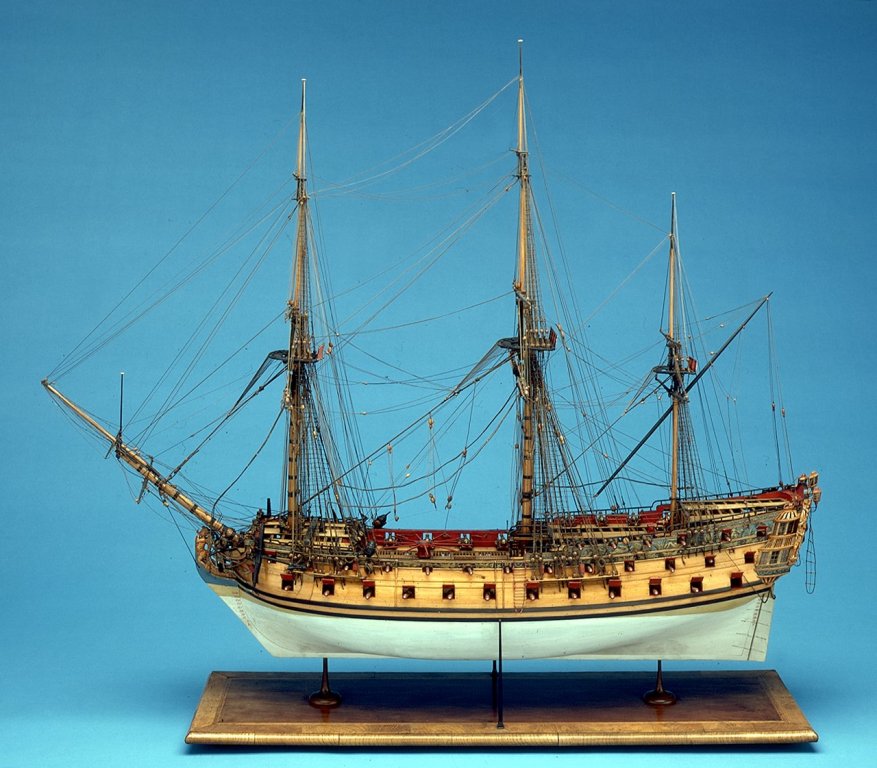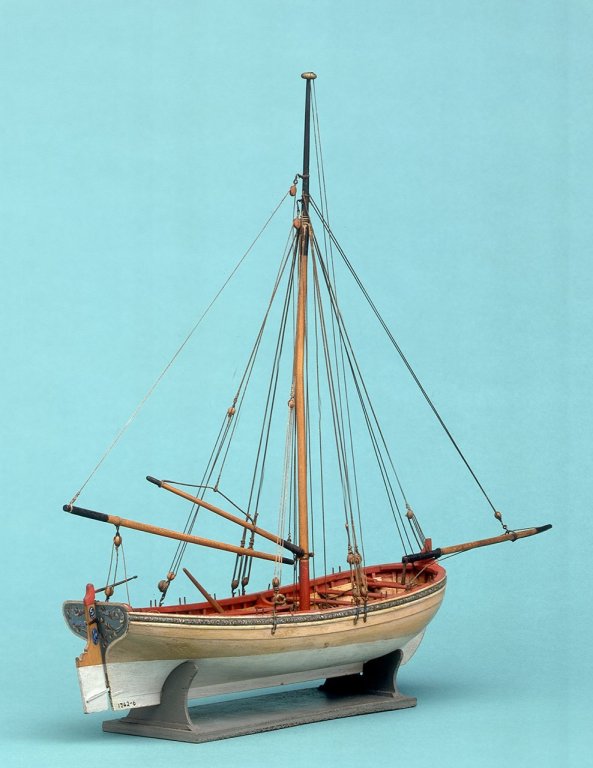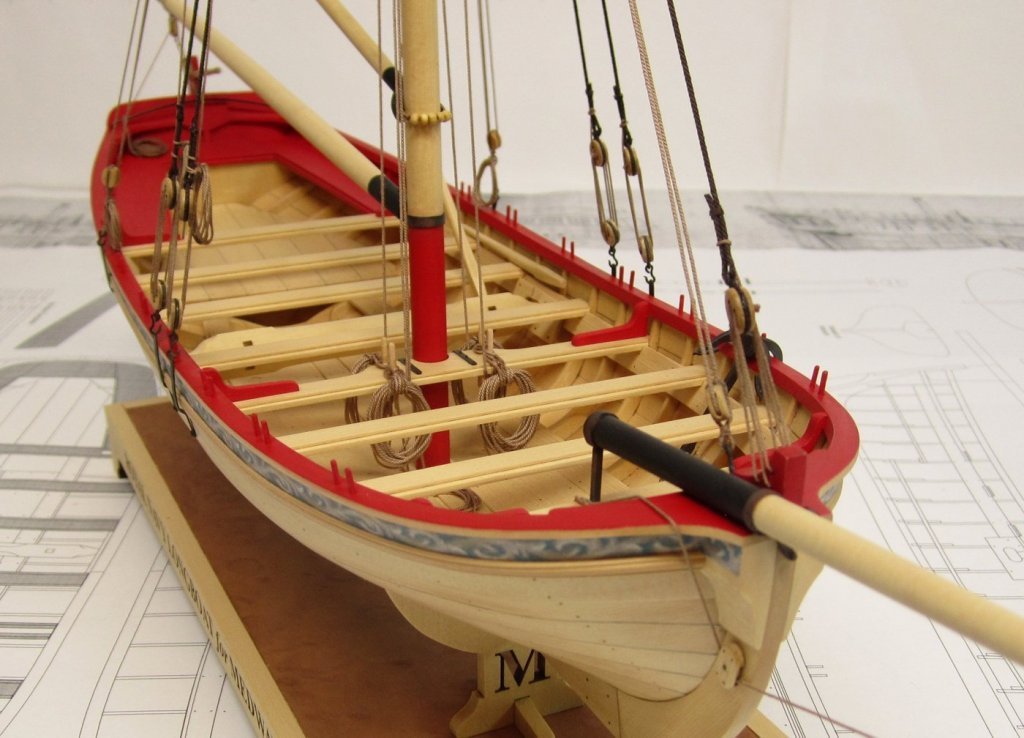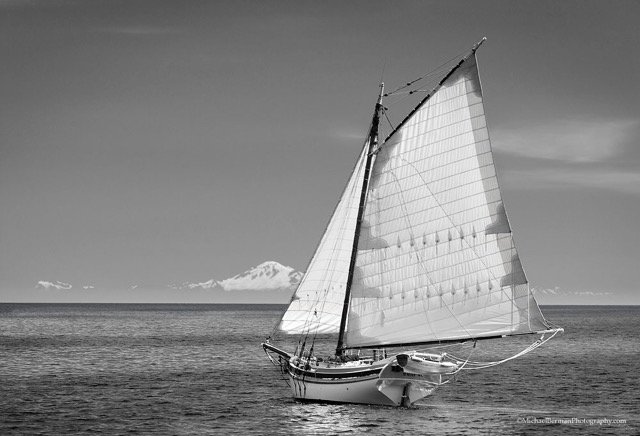-
Posts
9,637 -
Joined
-
Last visited
Content Type
Profiles
Forums
Gallery
Events
Everything posted by Chuck
-
This is the start of my build for the Medway Longboat. There are two really special contemporary models in the NMM. This is a totally revamped and completely new longboat project with actually little in common with my earlier design for Model Shipways. It is based on an entirely different original draft and more closely resembles the contemporary models. In fact its almost identical as far as I can tell. It will be a true POF model with floors and top timbers. This model will be made from Alaskan Yellow Cedar with boxwood accents and molding. This model will be made both partially planked and fully planked eventually just like the two contemporary models. The fully planked version will show all rigging and also sails. Hopefully. A little about the contemporary models shown below. Scale 1:48. A contemporary full hull model of a ship's longboat, said to be from the 'Medway' (1742) (SLR0328), built plank on frame in the Navy Board style. The model is partially planked and equipped with a large windlass amidships for use when handling the anchors. It is mounted on its original veneered baseboard. Another model, SLR0330, shows the ‘Medway’ longboat rigged and fully planked. The longboat was generally the largest boat carried on board ship and could either be pulled or sailed. It was used for carrying personnel and stores as well as mooring and anchors work. When carried on board, the longboat was stowed in the waist between the fore and main masts lashed on the spare topmasts and spars. It was hoisted in and out by means of the large block and tackles rigged to the lower fore and main yards. A contemporary full hull model of the 'Medway' (1742), shown below - 60-gun two-decker ship of the line
- 421 replies
-
- medway longboat
- Syren Ship Model Company
-
(and 1 more)
Tagged with:
-
If you click on the topic below it contains links to indexes of every build log on our forum for kits. These are downloadable PDF indexes with links to every build log in alpha order. There are six revenge kit logs but no Sao Miguel which should probably tell you something right there.
-
Look below this topic in the same forum and you will see two reviews that Jim posted....
-
You are in the home stretch!!!
- 120 replies
-
- queen anne barge
- Syren Ship Model Company
-
(and 1 more)
Tagged with:
-
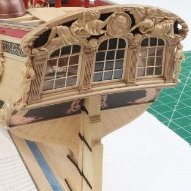
Requesting feedback for future MSW Group Projects
Chuck replied to Chuck's topic in Group Projects on Model Ship World
To give Carl and everyone a better idea of what you guys are free to propose in the way of a group project see this Mock sample proposal. Any of you folks can create a stand alone topic such as this one to lay out and propose any project. If you get the six or more participants then we will gladly set up the group for you. If you need any help along the way just ask. So as Kurt proposed....a Sharpie build....he should start a topic with similar information to rally support. Name a person who will be leading the group....hopefully the authors and designers. But these groups dont run themselves....so you or another person who will lead this group should try and organize it and create a detailed proposal for it as a stand alone topic. As Carl proposed...get together with Russ and flesh out some ideas on a Biloxi schooner and create a proposal topic to rally six members. Its really that easy and nobody has to be shy here. Just start a "PROPOSAL" topic but please lay out the details of the project so that everyone knows what it entails and who will be leading the group. If you are proposing a group and cant find a mentor/leader then contact us and we will try and find one for you. Important:You cant have a group project without a leader who will run it and hopefully mentor the builders. One who has some expertise on the subject and will dedicate some time and energy to keep it organized. Post tutorials for certain aspects or post info that will be useful to the group. Without a leader for a group.....we dont have a group. Its a requirement. For example...see the intro to simple carving group I started and assumed the role of group moderator or leader for. If on the other hand you have an idea for a group and wish to start one for let say.....an ice boat....but no commercially available plans or kits exist. Then still create a proposal. And if there is enough support for it the NRG may use some funding to help create one. This particular topic and poll was created to gather information on what people are willing to accept....prefering to build...and possibly be expected to pay....for a group as a general top-level discussion. Hopefully it will give the Admin and NRG some ideas should no members ever create a proposal. I urge all of you to do so!!! You never know, maybe there are dozens who also had the same though but never said anything. Basic rules for creating a proposal are written here.... -

Requesting feedback for future MSW Group Projects
Chuck replied to Chuck's topic in Group Projects on Model Ship World
Actually the Longboat is not a difficult build at all. At least not with the new design. But the goal here is create groups for all ranges of expertise. I would say that this group taking shape would be in the intermediate range. It will have pre spiled and laser cut planks for example. No carvings etc. A smallish subject done plank and bulkhead style would be a perfect choice for a beginner or someone on their second or maybe third model.....but we dont have any designed yet. They are in the works as soon as we can identify a subject that fits the bill. Then we will put one together. The ones I listed were only done because those projects are completed already or nearly completed and a group can be started sooner. Any yet- to- be named beginner-centric subject has yet to be developed. That of course wouldnt rule out six to 10 members who consider themselves beginners from organizing themselves and selecting an already available kit choice on the market and asking a suitable mentor to build it alongside them and guide them through the process. But once again.....our membership must speak up and suggest such a scenario so we can help them get it together. Carl, If you have such a project in mind...please let us know. Organize and gather some support for it. That can and should be done in this forum and you are free to create a topic to rally support. That is actually what this topic is trying to find out..because my attempts to ask our members to step up and start a topic to organize their own groups never happened..too shy perhaps..but we need folks to speak up and based on those that have already done so, we have the choices chosen thus far. Read the other topic in this forum which spells out how any member can try and organize a group build of their own!!! -

Requesting feedback for future MSW Group Projects
Chuck replied to Chuck's topic in Group Projects on Model Ship World
There will be a full kit available yes....but maybe some folks dont want the whole thing. Anyway, we shall see when we get that far. I was only thinking of offering a partial starter with frame and keel parts for anyone wishing to scratch the rest of it for the group project and save a little money. I probably wouldnt even list it on my site and only offer the starter here on MSW for the group. -

Requesting feedback for future MSW Group Projects
Chuck replied to Chuck's topic in Group Projects on Model Ship World
Great thank you...remember it will be a few months before its finalized. I am curious though rcmdrvr, why did you select that you are not interested in any of the projects in the poll above. -

Requesting feedback for future MSW Group Projects
Chuck replied to Chuck's topic in Group Projects on Model Ship World
No delay ...no additional costs other than what it would cost to ship stuff as usual. -

Requesting feedback for future MSW Group Projects
Chuck replied to Chuck's topic in Group Projects on Model Ship World
Not for frames.....I wont place the frame drawings on the plans for obvious reasons. In two weeks you would see a pirated kit on Aliexpress......and you would suddenly see the pirated kits being built on another forum with no mention or whisper about its actual origin. For my own project designs moving forward you will always need to purchase a starter package at a minimum.......it is unfortunately the only way to protect yourself these days...and you are really never fully protected. -

Requesting feedback for future MSW Group Projects
Chuck replied to Chuck's topic in Group Projects on Model Ship World
Thanks for letting me know. It will be a few months before its finalized but yes it will be at least a starter package with framing and keel. This longboat is much more simplified than something like the barge. It doesnt have nearly the complexity. I can produce a starter package very easily but like the barge I can also produce a full kit version. I plan on pre spiling all of the planking and providing laser cut parts for every single part of the long boat just like the barge but in reality they can be made from scratch if templates are provided. Chuck -

Requesting feedback for future MSW Group Projects
Chuck replied to Chuck's topic in Group Projects on Model Ship World
I am sure we can try a few things.....that is what will make this group well worthwhile to create. Hopefully we get six members at least before I finish and am ready cut parts. I will start a build log soon at any rate. So folks can see how it develops. -

Requesting feedback for future MSW Group Projects
Chuck replied to Chuck's topic in Group Projects on Model Ship World
I have been watching the progress on this topic closely including the poll. Based on the results so far I would like to propose something. I was also reading past topics about potential group projects and had a thought. We had/have about 40 build logs for the current tiny longboat kit from MS. That proves it is a popular subject and one that doesnt take very long to do. With this newer larger version on the boards, I think we can use such a vessel to make it interesting and educational for even the folks that have already built that first version. I would like to suggest that we use this kit as a way to explore and teach some techniques on sail making. The longboat only has three sails so it would not be a very daunting task. There are many way to make ship model sails but I prefer one over most. I also have someone in mind who is already making sails for his frigate using the same techniques. I would like to formally propose that we make this the subject of our next group project with the "piggy-backed" bonus of creating a sail making "tech-session" for it. All materials can be easily obtained and offered along with the parts to build the actual longboat. If you read the other topic on possible group projects and builds....sail making ranked very very high on the list of skills many of you would like to try....this may be the perfect little boat to try it on. What do you think??? It will take a few months to finalize all of this but once its ready I will set up an area. But first I really need to know that we have six or committed to take part in this group project. So please reply here with a definite "yes" if you will commit to this longboat/sail making group project. -

Requesting feedback for future MSW Group Projects
Chuck replied to Chuck's topic in Group Projects on Model Ship World
Post a picture so everyone can see one please -

Requesting feedback for future MSW Group Projects
Chuck replied to Chuck's topic in Group Projects on Model Ship World
Actually I think it would be easier. There is a lot of scratch building in that Connie and the design is a little dated. Still a great kit but requires a lot of bashing in my opinion. I cant recall how large the hull is on the connie but the scale of the Winnie also makes it easier. The hull is about 36" on the Winnie and she has 28 bulkheads that are really close together. So planking should be easier. I believe the Connie has less than 20. I am a little biased though so you might want to take that into consideration....there are many challenging aspects to the Winnie like shaping the bollard timbers, headrails... but other than a few of these instances its a pretty standard POB project with more modern design concepts. I would rank both as advanced level POB kits. Its just a matter of which one you want to build more. I still think its too large and involved a project to be a group project but hey ....a lot of you have told me you disagree. But it will take years and not a couple of months like the smaller subjects we are talking about. Look at Rusty's barge build log. He is doing a fantastic job on it and he is just about done. I think it took him only a few months. That is the sort of thing I think would make a better group project....limited to about maybe a year of build time. But that is just my opinion. -

kit review 1:80 Endeavour - Ship Model Okumoto
Chuck replied to James H's topic in REVIEWS: Model kits
They look like very nice kits. You could do a lot with some solid framework like that. The wood looks pretty good as well. I prefer a planked model and I can certainly imagine that you could do a fine job with this. Plank it in Boxwood and and plank the deck and add a little paint and you have real beauty. Its a great way to offer a kit that allows a builder to also make it their own. I always admired the colors of the painted up replica and even built the AL version. It was my first ever ship model. I would love to revisit the subject again someday. -

Requesting feedback for future MSW Group Projects
Chuck replied to Chuck's topic in Group Projects on Model Ship World
Make sure to cast your votes and fill out the poll....remember we need at least six to start an actual group. When I am ready to roll out either project of mine I will ask again but there other subjects listed in the poll as well. Anything new the NRG sanctions will be a while so feel free to talk about the subjects that you would like to see. So far we dont really have a consensus on any one subject that the NRG would pursue. Although we have many votes for a ster section...... So I will be sure to talk about the many choices when I get together with the board members for a talk about it. And to all of you who took the poll.....THANK YOU!!!! -
Thats the way to do it.....works wonderfully.
- 120 replies
-
- queen anne barge
- Syren Ship Model Company
-
(and 1 more)
Tagged with:
-

Requesting feedback for future MSW Group Projects
Chuck replied to Chuck's topic in Group Projects on Model Ship World
There is still quite a bit of activity with that group so its not in any danger of being shut down. On the other hand we may have to finally wind down the Echo group because I only hear crickets from that area. But we have been talking about that for a while. It never really goes away entirely as we will move the build logs to the general scratch build log forum etc. Chuck -

Requesting feedback for future MSW Group Projects
Chuck replied to Chuck's topic in Group Projects on Model Ship World
Eric, Nice choice....I will certainly keep that mind. Very good -

Requesting feedback for future MSW Group Projects
Chuck replied to Chuck's topic in Group Projects on Model Ship World
Also remember that we need to have someone moderate these groups that ideally would be the designers/authors. I forgot to mention that important piece of the puzzle. Or at least someone who really really knows the subject matter and is familiar with each project. As the NRG creates and sanctions new online group projects this will be an important part of that....which may be an issue with the Galley Washington. But we will see. -

Requesting feedback for future MSW Group Projects
Chuck replied to Chuck's topic in Group Projects on Model Ship World
Probably Not Chuck....The cross section is one project that I work on a little at a time. Right now my priority is the Winnie. The longboat build is something I am putting together for my local club as a an actual "group build" that a bunch of us will take part in. So those are two I am finalizing first.. The cross section will proceed, but slowly, as its more involved and the plans arent even fully developed yet. It will get there though. Joe, the Hayling is a much more complex project than Winnie. Although smaller it isnt something that will take any less time actually in my opinion to build. But it would do just the same and make a fine project to call an online group build. An online group build is very different in the sense that we set up a special area where folks can build at there own pace. All of the logs are in the same area and the project can be led and moderated by the person who designed and created the project. They would offer mentoring and advice. Collectively the group can solve problems and explore different methods for building the same subject. Because they are all in the same area it is easier for the group to mange and look at each others progress. See the group forum for the Admiralty models Echo cross section. That is what we would do when setting up a group build for Hayling or other subjects. Having a starter package for Hayling or any other project is really up to the authors and designers of the model. So David would have to arrange for the creation of such a starter package. In order to be considered a group project there also needs to be a minimum of six participants before we can start one. So we would need to get the commitment of at least six members before we start a group of any subject. Keep that in mind. Now if we get six members that tell me they commit to building the Hayling and each will start a build log, we will certainly start a group area for it and I would talk to David to see if he would moderate and mentor the group online. As we talk about a group project more I will take down names to see if we have six members willing to start build logs of whatever subject seems most popular. Something like Hayling would NOT be an NRG sponsored project but just a separate group area we are always willing to set up for any subject we have six or more commitments for. We will set up such an area for any group actually. Similar to the Echo Cross section. You buy the book and plans from Admiralty and start a log in the new area we set up...unaffiliated with the NRG other than we will accommodate the group. So let me distinguish between the two types of group projects. The first type is done by and wholly sanctioned by the NRG. They sponsor the research, creation and dissemination of all items associated with the project. They own it. Currently none exist that have been specifically designed for an online group. Although you could add the Galley Washington and the Oyster Sharpie to the list for projects that are immediately available for a group forum. The second type is a group set up to build a project NOT affiliated or owned by the NRG at all. This would be something like the Hayling, the Winnie or the Long boat. Depending on how things go with this discussions about a Winnie or Longboat group, the same is true. We need six to commit. It doesnt have to be a project that is designed by the NRG for the forum at all, but they have set aside funds to create one based on what folks want to build that might not be already available and its why nothing is ready yet. I mention the Winnie, the longboat and Hayling here only because many of you are clamoring to begin a group sooner than later. They wouldnt really be NRG designed and owned projects. Hopefully that is clear. Now...before the NRG starts designing and sanctioning a new project, they want to get an idea of what you guys want....so they dont waste years and $$$ developing a project that we cant get six people to commit to. Thus the discussion we are having. But non NRG subjects are fair game and can be started immediately if available and we have a moderator and six committed build logs. If you guys think it would help, I can add these subjects to the poll for immediate consideration for a group project. If we get six commitments then we can start one. BUt we still need to choose new subjects for later. I will add to the poll so you guys should check out the new question. and give some input. -The Washington Galley (NRG Owned) Currently no starter package or kit, plans only -The Oyster Sharpie (NRG Owned) No starter package or kit, plans only -The Hayling - Currently no starter package, plans only -The HMS Winchelsea 1764 - 3-4 months away - has a starter package and plans -Medway Longboat 1742 - 3-4 months away - has full kit with plans -None of the above....you will wait for another new choice -
That looks lovely....really nice job using the weathering powders.
- 120 replies
-
- queen anne barge
- Syren Ship Model Company
-
(and 1 more)
Tagged with:
-

Requesting feedback for future MSW Group Projects
Chuck replied to Chuck's topic in Group Projects on Model Ship World
That would be a little out of scope. LOL It would be great to see though, but as most already know, any model of Intrepid would be purely speculation and fantasy. Too much reconstruction and guesswork for my tastes when we have so many other well documented subjects to model accurately. In order to produce a quality set of plans for a frigate or larger vessel you need to spend years......not something I am sure we can convince someone to do for us. For example, It took me years to develop and research the Winchelsea (and Syren which was our first group project I think) and produce a set of plans that are any good. There are other sites that whip these out every six months but they hardly make for accurate projects that are buildable. They are called "ten foot models" in the industry. Kits and model projects that only look good from about ten feet away when completed...LOL. Having said this though....the plans for the Winchelsea are in fact completed. As some of you have been suggesting via PM. But I will never release my plans as a download again because next week you will see it for sale on Ebay and Alibaba. So a project like the Winnie would absolutely require the purchase of a starter package and the bulkheads would NOT be shown on the plans. But I would absolutely be open to entertaining the idea of making the Winnie a group project. But within those parameters only. Its something the NRG board would need to work out with me. We have not started any new projects yet and have just laid the groundwork for them and set aside the funding. So if you guys are itching for something sooner than later we are only talking about the two subjects that I have nearly completed and designed. I was thinking you guys would want to build something else though. The first is the Winnie (1/4" scale only) as mentioned and it would only be possible as a group project because its completely done and planned out already....the second is the new and improved Medway Longboat of 1742 in 1/2" scale. The new version is based on an actual contemporary draft from that period and is much much better than my older generic longboat design at 1/4" scale. It will hopefully look just like the contemporary model of it fully framed with floors and top timbers,etc. So if you guys are willing to wait 12-18 months for something entirely new we can continue talking about it which will fill the pipeline for later. If you guys are eager to start something now or in 3 or months or so......then we are pretty much limited to the two projects I personally developed and are almost ready for primetime. Feel free to express your opinions about it here and let us know if you would be interested in either of these two or if you want to wait until we flesh something else out later because neither of these interest you as a group project. This of course would also be subject to the approval by the NRG board.....Im sure we could work something out though. Chuck
About us
Modelshipworld - Advancing Ship Modeling through Research
SSL Secured
Your security is important for us so this Website is SSL-Secured
NRG Mailing Address
Nautical Research Guild
237 South Lincoln Street
Westmont IL, 60559-1917
Model Ship World ® and the MSW logo are Registered Trademarks, and belong to the Nautical Research Guild (United States Patent and Trademark Office: No. 6,929,264 & No. 6,929,274, registered Dec. 20, 2022)
Helpful Links
About the NRG
If you enjoy building ship models that are historically accurate as well as beautiful, then The Nautical Research Guild (NRG) is just right for you.
The Guild is a non-profit educational organization whose mission is to “Advance Ship Modeling Through Research”. We provide support to our members in their efforts to raise the quality of their model ships.
The Nautical Research Guild has published our world-renowned quarterly magazine, The Nautical Research Journal, since 1955. The pages of the Journal are full of articles by accomplished ship modelers who show you how they create those exquisite details on their models, and by maritime historians who show you the correct details to build. The Journal is available in both print and digital editions. Go to the NRG web site (www.thenrg.org) to download a complimentary digital copy of the Journal. The NRG also publishes plan sets, books and compilations of back issues of the Journal and the former Ships in Scale and Model Ship Builder magazines.


